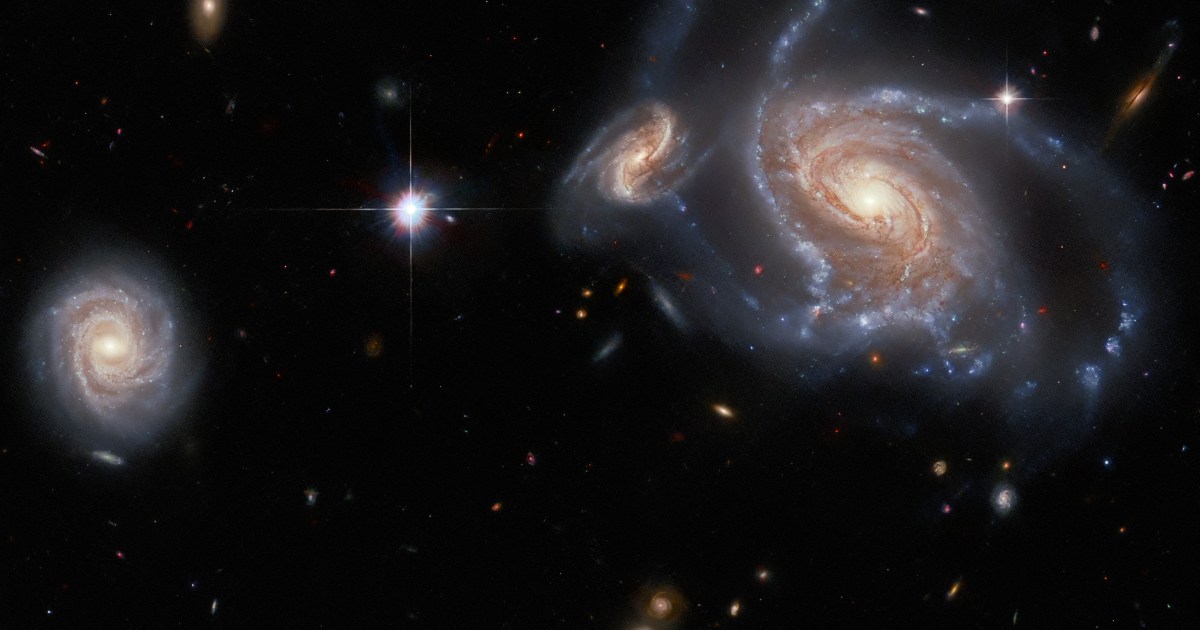This week’s image from the Hubble Space Telescope shows a host of galaxies overlapping in a complex swirl. Four main galaxies are shown in the image, three of which look like they are practically on top of each other, but all is not as it appears in this case.
The largest galaxy in the image, located on the right, is NGC 1356, an elegant barred spiral galaxy similar to our Milky Way. It is also known as the Great Barred Spiral Galaxy due to the prominent nature of its bar, which is a bright structure at the center of the galaxy which is rich with stars. Near this galaxy appear two smaller spiral galaxies, LEDA 467699 and LEDA 95415, and off on the left side of the image is IC 1947.
The tricky part of this image is that while it appears that the three galaxies on the right are clustered close together, and the one on the left is further away, that isn’t actually the case. The two LEDA galaxies appear on top of NGC 1356, but they are millions of light-years apart and only appear so close because of the angle at which we are viewing them. They appear in the same patch of sky when observed from Earth, but their distances from us are vastly varied.
On the other hand, the lonely-looking IC 1947 is actually much closer to the large galaxy NGC 1356 on the right. There are less than 400,000 light-years between them, making them relative neighbors in this patch of the universe.
Hubble has taken similar previous images, which show galaxies that appear to be on top of each other but are, in fact, overlapping but located at different distances from Earth. It’s not always easy to distinguish between these images and those where galaxies are actually interacting with each other, though one tell-tale sign of interacting galaxies is when the forces of gravity distort one or both galaxies as they get close together.
Editors’ Recommendations


